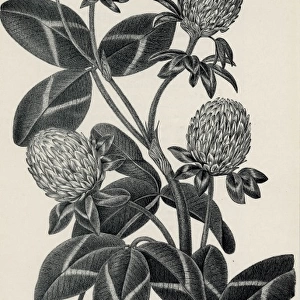Home > Animals > Insects > Butterflies > Related Images
Curtis British Entomology Plate 687
![]()

Wall Art and Photo Gifts from Mary Evans Picture Library
Curtis British Entomology Plate 687
Lepidoptera: Porrectaria albicosta = Coleophora albicosta (Testaceous White-back) [Plant: Medicago sativa (Lucerne)] Date: 1824-39
Mary Evans Picture Library makes available wonderful images created for people to enjoy over the centuries
Media ID 23040566
© The Robin Symington Collection/Mary Evans Picture Library
1820s 1830s Butterflies Butterfly Curtis Entomology Ledipotera Lucerne Sativa Medicago
FEATURES IN THESE COLLECTIONS
> Animals
> Insects
> Butterflies
> Related Images
> Mary Evans Prints Online
> New Images August 2021
EDITORS COMMENTS
This image is taken from Curtis's British Entomology, Plate 687, featuring the Testaceous White-back Moth, Porrectaria albicosta, now known as Coleophora albicosta. The moth is depicted in its pristine form, with its wings spread wide against the backdrop of Medicago sativa, commonly known as Lucerne or Alfalfa. The plate is a testament to the intricate detail and precision of natural history illustration during the 1820s and 1830s. John Curtis, the esteemed botanist and entomologist, oversaw the production of this work, which was published between 1824 and 1839. The plate is part of the larger series, Flora Sessile and Insecta, which aimed to document the diverse fauna and flora of Britain. The Testaceous White-back Moth is a member of the Lepidoptera order, which includes butterflies and moths. Its scientific name, albicosta, translates to 'white-costed,' referring to the white markings on the moth's wings. The moth's testaceous, or earthy-colored, body contrasts beautifully with the vibrant white markings. The Lucerne plant, Medicago sativa, is shown in the plate as the moth's preferred habitat. This plant is an essential forage crop, widely used in agriculture for livestock feed and soil improvement. The symbiotic relationship between the moth and the Lucerne plant highlights the intricate connections between different species within an ecosystem. This photograph is a valuable historical record, showcasing the beauty and diversity of the natural world as observed over two centuries ago. It serves as a reminder of the importance of preserving and documenting the natural world for future generations.
MADE IN AUSTRALIA
Safe Shipping with 30 Day Money Back Guarantee
FREE PERSONALISATION*
We are proud to offer a range of customisation features including Personalised Captions, Color Filters and Picture Zoom Tools
SECURE PAYMENTS
We happily accept a wide range of payment options so you can pay for the things you need in the way that is most convenient for you
* Options may vary by product and licensing agreement. Zoomed Pictures can be adjusted in the Cart.






